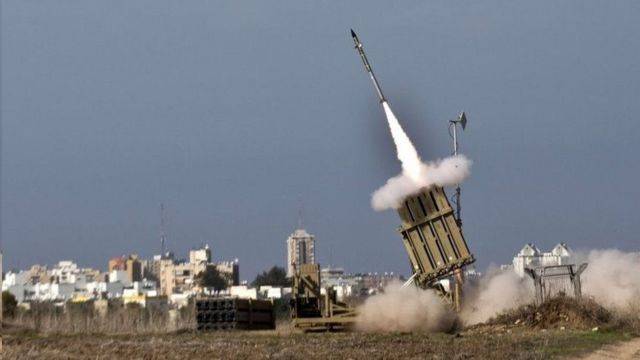The Israeli army announced that the Iron Dome system for intercepting short-range missiles achieved a 96 percent success rate in intercepting those fired from Gaza during the latest rounds of fighting between Israel and Palestinian factions. Here are some details about the Iron Dome:
The system was developed by the state-owned Rafael Advanced Defense Systems in Israel with support from the United States to counter rocket fire from Lebanon, which targeted Israeli towns during the 2006 war with Hezbollah, and from the Palestinians in the Gaza Strip, which has been controlled by Hamas since 2007. The system became operational in 2011.
Each truck-mounted unit launches radar-guided missiles to destroy short-range threats such as rockets, mortar shells, and drones in the air. The system complements Israel's multi-layered air defense array, including the Arrow-3 system designed to intercept ballistic missiles outside the earth's atmosphere.
The high success rate achieved by the system over the past decade, confirmed by officials from the U.S. Department of Defense (Pentagon), has drawn international attention. Rafael states that it delivered two Iron Dome systems to the U.S. military in 2020. Ukraine is also seeking supplies in its war with Russia. Israel has not yet provided this system to Kyiv but has offered humanitarian support and civil defenses.
In 2017, Israel deployed a naval version of the Iron Dome to protect ships and installations at sea. The system can quickly determine whether a missile is on a course to hit a populated area and, if not, ignores the missile and allows it to fall without causing harm. Initially, the Iron Dome was described as providing coverage sufficient for a city against rockets with a range between four kilometers and 70 kilometers, but experts say that this range has since expanded.
The cost of Israeli interception systems to neutralize incoming threats ranges from tens of thousands to millions of dollars. Israel is developing a laser system aimed at neutralizing threats from enemy missiles and drones, with an estimated cost of only two dollars per interception.




